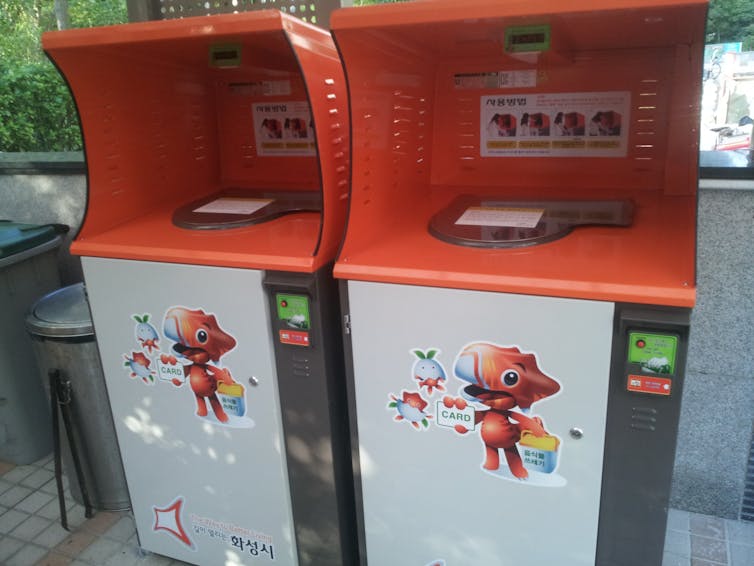US consumers throw away a lot of food throughout the year. This is about one-third of all food purchased. This equates to 1,250 calories per person per day, or $1,500 worth of groceries for a family of four each year. When food spoils, so does the land, labor, water, chemicals and energy used to produce, process, transport, store and prepare it.
where does the food you don’t want go? mainly underground. Food waste accounts for nearly 25% of landfill space nationwide. When buried, it decomposes to produce methane, a powerful greenhouse gas that contributes to climate change. Recognizing these impacts, the US government has set the goal of halving food waste by 2030.
By wasting less food, we can conserve natural resources, save consumers money, reduce hunger and slow climate change. But as an agricultural economist and director of the Ohio Food Waste Community, I am well aware that there are no elegant out-of-the-box solutions. Developing meaningful interventions requires delving into the systems that make reducing food waste so difficult for consumers and understanding how both physical and human factors contribute to this problem.
Chain of consumers and wasteful spending
Food must avoid possible failures in moving from the soil to the stomach so that it is not wasted. Baruch College marketing expert Lauren Block and her colleagues call this pathway the wastage sequence.
It’s an example of what economists call o-ring technology, and the catastrophic failure that led to the 1986 Space Shuttle Challenger disaster was traced to rubber seals. A transition to human nutrition leads to failure of the entire task.
Massachusetts Institute of Technology economist Michael Kremer has shown that when many types of companies are faced with such a series of tasks, they deploy their best-skilled staff to the final stages of production. Otherwise, companies risk losing all the value they add to raw materials throughout the production sequence.
Who is doing the final stages of production in today’s modern food system? Enthusiastic, multitasking, money and time constrained consumers. At the end of a typical day, we juggle a myriad of demands as we try to cook nutritious and delicious meals for our families.
Unfortunately, the modern sprawling food system is not managed like a single integrated company focused on maximizing profits. And consumers are not the highly skilled heavy hitters envisioned by Kremer to manage the final stages of a complex food system. not.
In fact, among all those employed across the fragmented U.S. food system, consumers may lack professional training in food handling and preparation. , businesses don’t always want to help consumers get the most out of their food purchases. It could reduce their sales. Also, if food stored for a long period of time deteriorates, making it less appetizing or unsafe, it can damage the reputation of the producer.
3 ways to kill waste
This can probably start with students by reinvesting in courses in family and consumer sciences. Alternatively, schools can insert food-related modules into existing classes. Biology students can learn why mold forms, and math students can calculate how to scale recipes up or down.
Outside of school, there are growing opportunities for self-education available online or through clever gaming experiences like Hellman’s Fridge Night Mission. This is an app that challenges and guides the user to eat one more meal per week from the fridge, freezer and pantry. Yes, you may need to add mayonnaise.
A recent study found that food waste decreased when people had the opportunity to brush up on their kitchen management skills early in the COVID-19 pandemic. But as consumers returned to their pre-COVID busy schedules and routines such as eating out, the waste returned.
- Make home meal prep easier.
Enter meal kits that provide the exact amount of ingredients you need. One recent study showed that 38% less food wasted with meals prepared from kits compared to traditional home-cooked meals.
Meal kits increase packaging waste, but this additional impact may be offset by reduced food waste. The net environmental benefit may be case-specific and should be investigated further.
- Enhances the consequences of wasting food.
South Korea has started imposing a tax on food discarded at home. This requires disposal in special expensive bags or, for apartment residents, through a pay-as-you-go kiosk.

no silver bullet
All of these methods are promising, but there is no single solution to this problem. Not all consumers seek or encounter opportunities to improve their food handling skills. Meal kits themselves pose logistical problems and may be too expensive for some households. Few US cities may be able to.
As the National Academy of Sciences, Academy of Engineering and Medicine concluded in a 2020 report, many solutions are needed to address the significant contribution of food waste to global climate change and global malnutrition. I need a measure. Both the United Nations and the US National Science Foundation are funding efforts to track and measure food waste. We hope that this work will help us understand waste patterns more clearly and find effective ways to curb the cycle of waste.![]()
This article is reprinted from The Conversation under a Creative Commons license. Please read the original article.
